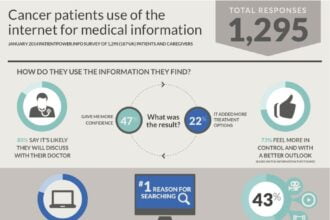It’s been a few weeks since Apple’s announcement about its Health app, the consumer electronics giants’ new dashboard for capturing health data; and HealthKit, its foray into establishing a healthcare integration platform for wearables and other sensor-generated data.
It’s been a few weeks since Apple’s announcement about its Health app, the consumer electronics giants’ new dashboard for capturing health data; and HealthKit, its foray into establishing a healthcare integration platform for wearables and other sensor-generated data.
In February, Optum’s acquisition of Audax was market validation for using mobile and rich media features as one approach to helping plan members to get and stay healthy. Since then, several other well know information technology players have put their chips on the table relative to announcements about connected, wearable health solutions.
- Google. This week Google announced Google Fit as a hub for data connectivity with fitness tracking wearables and cross-platform APIs that developers can use to provide consumers with the means to better keep track of their fitness goals. This is Google’s second act in health, and with their previously announced diabetic-sensor-in-a-contact-lens, they seem to have a well thought out technology and product strategy.
- Microsoft. In February, Microsoft added to its quietly evolving Healthvault platform by announcing the Bing Health & Fitness App, a fitness and medical reference tracker focused on wellness.
- Salesforce.com. Also this month, the CRM market leader began messaging around its abilities as a healthcare platform with a focus on mobile. Salesforce.com is not to be trifled with, and while they’ve been quietly amplifying their healthcare footprint via application partners in recent years, the timing of their announcement is notable.
- Samsung. In May, Samsung began several announcements (SAMI – Samsung Architecture for Multimodal Interactions; its ‘Voice of the Body’ initiative; and gear like the Simband sensor watch); and built on its focus of becoming a global leader in healthcare with mobile at the forefront.
- WebMD. In conjunction with Apple’s announcement, WebMD Healthy Target was announced as an iOS feature that will allow users to track biometric data from sources such as wearable activity, glucose and other trackers. Goal setting, progress reports and other summaries are part of the package.
Consumers who use tracking tools and related sites like these are typically individuals already in tune with their health. At first glance, it’s hard not to wonder how much useful data are being generated and not already being captured by the likes of DigiFit, Jiff, Health Advocate, LiveHealthier, MapMyFitness, RedBrick, RunKeeper, ShapeUp, Vitality, Viverea and WellTok. A well-deserved nod to the consumer appeal of Apple, but if you’re already engaged in monitoring your health by using one of these great tools, why migrate?
Does harmonizing data between wearables and enterprise health systems call for a “Switzerland” strategy? As the volumes of healthcare data grow and sensors become more sophisticated, the importance of broader interoperability and data integration between wearables and enterprise healthcare engines (EMR, claims, clinical and population health management) are growing too.
The need is founded on managing risk for members / patients and knowing as much as possible about these consumers or a population. Microsoft’s Healthvault struggled and Google Health outright failed because both vendors assumed consumers would actively enter health data into their tools, creating a useful database.
The two most interesting aspects of the Apple announcement were the endorsement from Mayo Clinic and an undefined partnership with Epic. On the surface, Apple and Epic don’t have a lot in common with very different underlying technologies, so a shared developer ecosystem is hard to imagine.
However, the usefulness of Apple Health Kit might boil down to whether it can extract a patient’s clinical data from Epic, securely sync that data with an iPhone such that it’s simple for the patient, and make that data portable so it can be leveraged by other healthcare professionals who are serving that patient.
Apple aside, the ramifications of how wearable data can be used is wide ranging as payers and providers look to manage risk — and employers consider how their wellness models might include rewards for monitoring and reporting activity levels to help employees be healthy and spend less on healthcare.
Additionally, we think the ability to enhance data interoperability regardless of technology or device is increasingly important. One new player in the healthcare interoperability stack is Validic, who is integrating both provider and payer enterprise systems with consumer wearables and allowing their clients to in fact, be Switzerland.
The simple graphic below depicts how some of the current announcements in consumer health platforms may begin to realign because of the influence of wearables, and emphasize the growing importance of healthcare interoperability and workflows.
What about the FDA? Through sources close to TripleTree, we’re aware of how the FDA has been refining and expanding its definitions of a ‘health app’ versus a ‘diagnostic app’. In some reports surrounding the Apple HealthKit announcement, it appears that Apple asked the FDA about their approaches to messaging for healthcare solutions on the iPhone and iPad. Just having an app gathering data is not a conclusion of anything medical. So while we’re in the early but exciting innings of connected health and wearables, there is still little evidence validating the accuracy of the hundreds of sensors and thousands of apps in the market.
Regardless, in the quest for harvesting consumer healthcare data, wearable devices, digital apps and consumer services will remain front and center in transforming health and healthcare. Convenience and the ability to engage consumers on their terms will carry the day because in connected health without convenience, there is no engagement.
Regardless of the quickened pace of investment which we recently summarized, the noise around this area of the market is loud and will be confusing for several quarters. Fortunately, macro-economic forces have a way of shaking out the solutions that are half-baked, so as leading approaches and solutions emerge we’ll review and opine about them.
Until then, let us know what you think.







